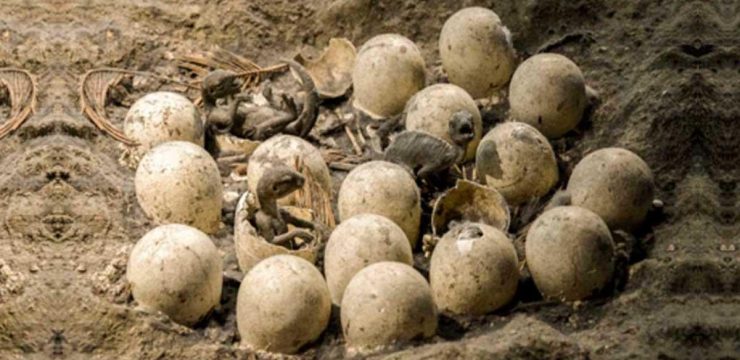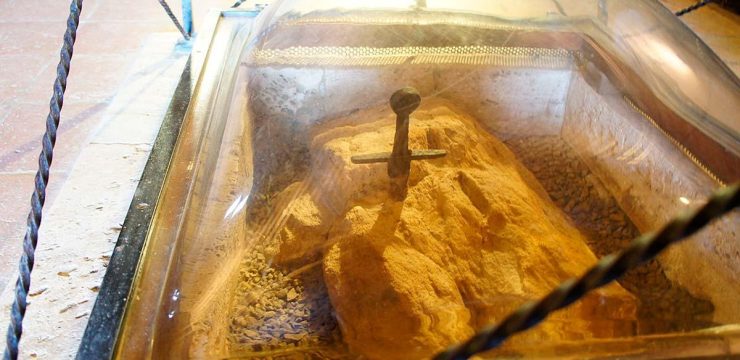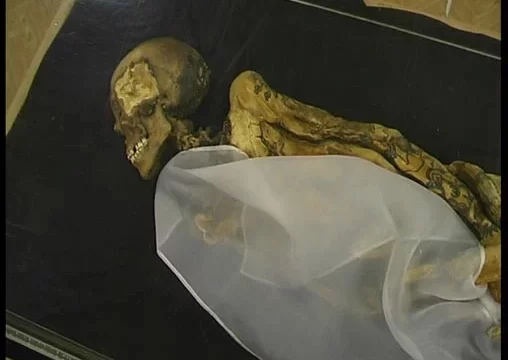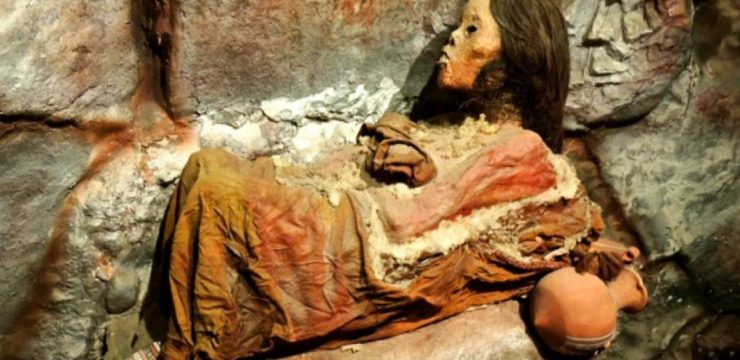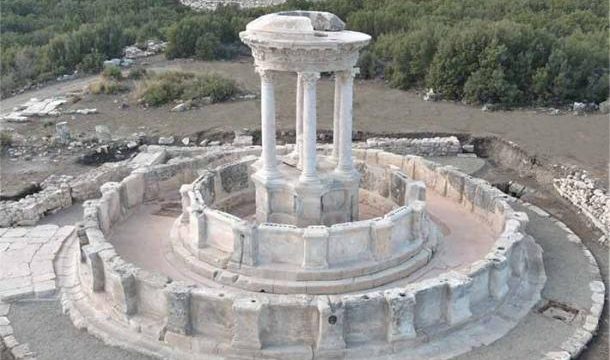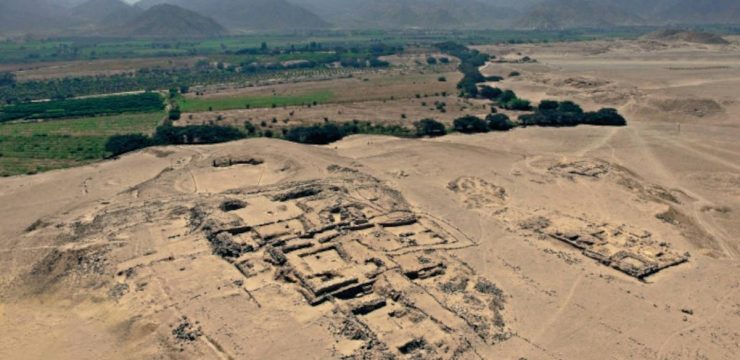Nestled in the sacred heart of Najaf, Iraq, Wadi Al-Salam Cemetery stands as more than just the largest burial ground on Earth—it is a powerful testament to centuries of spiritual devotion, religious tradition, and cultural heritage for Shia Muslims around the world. Covering a staggering 1,485.5 hectares, this historic cemetery has served as a final resting place for over five million souls, some buried as long as 1,400 years ago. For generations, families from across the Middle East have brought their loved ones here to be interred near the holy shrine of Imam Ali, a figure of immense reverence in Shia Islam. The cemetery’s presence in Najaf has turned the city into a vital spiritual hub, drawing pilgrims and mourners who seek not only closure but a sacred connection that transcends life itself.
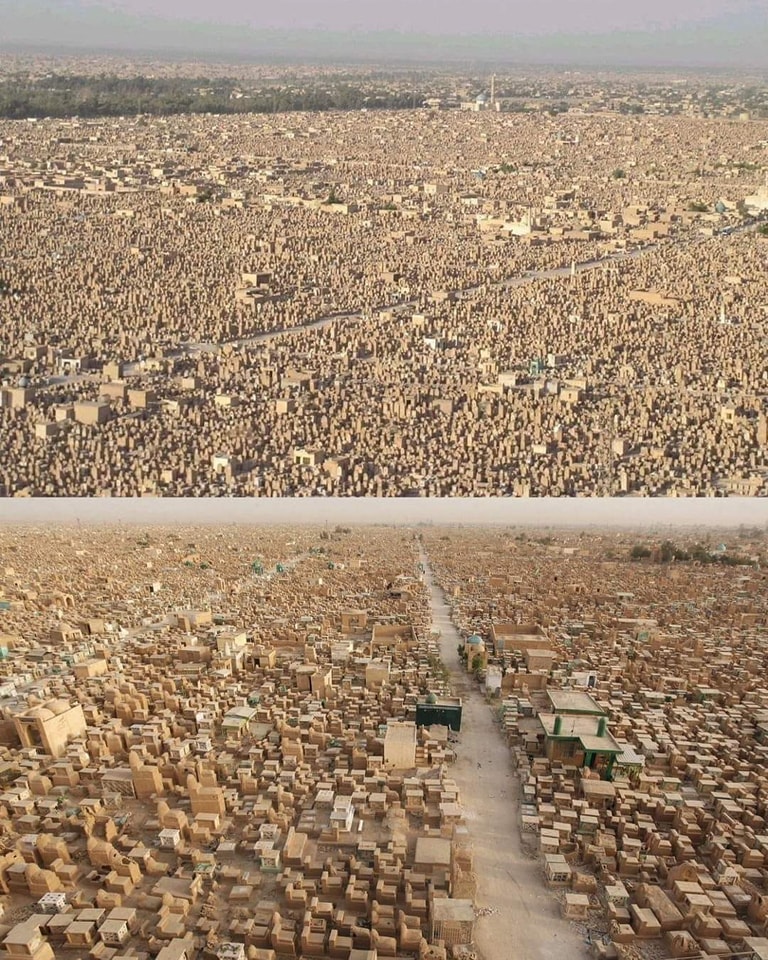
Wadi Al-Salam is more than a place for the dead—it is deeply intertwined with the faith, hopes, and identity of millions. In Shia belief, burial in this sacred ground offers a chance for spiritual nearness to Imam Ali and the hope of his intercession on the Day of Judgment. This belief has carried immense influence for centuries, prompting a continuous flow of burials that date back to the 7th century. Throughout Iraq’s long and often turbulent history, the cemetery has grown steadily, bearing silent witness to the nation’s many political and social upheavals. Yet it remains a resilient symbol of devotion, untouched in its sacred purpose even amidst war and instability. Every inch of Wadi Al-Salam tells a story, not only of those who lie beneath the soil but of the communities and generations who chose this holy ground to anchor their family legacies.
Walking through Wadi Al-Salam feels like entering an ancient city of the dead. The landscape is not defined by the neat rows of graves common in Western cemeteries, but instead by a rich, almost chaotic blend of towering mausoleums, narrow pathways, and ornate tombs that rise like sentinels over the desert earth. Each structure is a reflection of the life once lived—some modest and humble, others grand and elaborate. Many tombs house entire families across generations, with underground chambers where the remains rest in quiet dignity. These burial spaces showcase a rich blend of cultural expression and religious symbolism, echoing the diversity of those buried within. Wadi Al-Salam does not merely hold the dead; it invites the living to wander through its winding corridors, to reflect, to pray, and to feel the pulse of a community that endures through memory.
The cemetery plays a unique and essential role in the life of Najaf. Far from being isolated from daily activities, Wadi Al-Salam is woven into the rhythm of the city itself. Families visit regularly to maintain graves, offer prayers, and honor the memory of their ancestors. Vendors outside the cemetery sell flowers, incense, and religious tokens. Pilgrims come not just to grieve, but to connect with something larger than themselves—something eternal. The cemetery’s very presence has shaped the local economy and culture, sustaining artisans, caretakers, and scholars who work within its walls. The rituals performed here are deeply rooted in Shia tradition, from the recitation of specific prayers to the careful placement of soil from Najaf on the bodies of the deceased. In this way, Wadi Al-Salam is both a resting place and a living symbol of devotion, a place where the lines between life and death blur and spiritual reflection becomes a daily act of reverence.
Despite its peaceful purpose, Wadi Al-Salam has faced numerous challenges over the years. Iraq’s conflicts, particularly during the late 20th and early 21st centuries, brought violence and instability to even the most sacred spaces. The cemetery was not immune—bombings, political tension, and territorial disputes have all left their mark. Additionally, as the number of burials continues to rise, questions about sustainability, space management, and preservation have become more pressing. There are concerns about how to protect such a vast and important historical site without compromising its sacred nature or overwhelming the city that hosts it. Yet amid these difficulties, caretakers and local authorities have worked tirelessly to uphold the dignity and order of the cemetery. Restoration efforts, documentation initiatives, and better organization of burial plots have all played a role in preserving this invaluable spiritual landmark.
What makes Wadi Al-Salam truly remarkable is not just its scale, but the emotion and meaning attached to it. Every tomb is a chapter in a much larger story, one of faith passed down through generations. Families return year after year, their bonds renewed by the rituals they perform and the loved ones they remember. In a world where the pace of life often pushes us away from tradition, Wadi Al-Salam endures as a sanctuary of continuity—a place where history, belief, and humanity meet. The cemetery’s influence radiates far beyond Iraq, touching the hearts of Shia communities around the globe. It is a place of mourning, yes, but also of hope. It is a place of silence, yet one filled with the voices of generations that still echo in the memories of the living.
As we reflect on Wadi Al-Salam’s past and future, its story offers a powerful reminder of how sacred spaces shape our understanding of life, death, and legacy. In its quiet strength, the cemetery continues to bear witness to the human spirit’s resilience, the enduring power of faith, and the unbreakable bond between the living and those who came before. Whether you are a pilgrim seeking spiritual solace or a student of history exploring the depths of a centuries-old tradition, Wadi Al-Salam offers a glimpse into a world where memory never fades and peace is more than a word—it is a promise, etched into the very ground itself.
